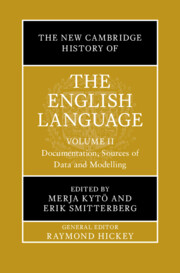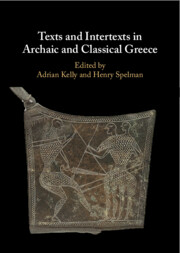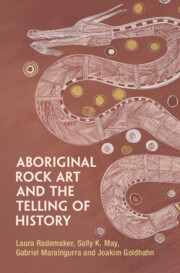Refine search
Actions for selected content:
93 results
Chapter 7 - Orality and Modern African Writing
- from Part I - Decolonization Currents
-
-
- Book:
- African Literature in Transition
- Published online:
- 07 November 2025
- Print publication:
- 20 November 2025, pp 140-154
-
- Chapter
- Export citation
Chapter 2 - Responding to Orality in African Literature
- from Part I - Sources
-
-
- Book:
- African Literature in Transition
- Published online:
- 31 October 2025
- Print publication:
- 13 November 2025, pp 33-46
-
- Chapter
- Export citation
4 - Digital Interaction in the History of English
- from Part I - The Transmission of English
-
-
- Book:
- The New Cambridge History of the English Language
- Published online:
- 23 October 2025
- Print publication:
- 23 October 2025, pp 107-136
-
- Chapter
- Export citation
Deyiş in transmission: Alevi poetry and music as religious tradition
-
- Journal:
- New Perspectives on Turkey , First View
- Published online by Cambridge University Press:
- 23 October 2025, pp. 1-20
-
- Article
-
- You have access
- Open access
- HTML
- Export citation

The New Cambridge History of the English Language
- Documentation, Sources of Data and Modelling
-
- Published online:
- 18 October 2025
- Print publication:
- 16 October 2025
Introduction to Volume II
-
-
- Book:
- The New Cambridge History of the English Language
- Published online:
- 18 October 2025
- Print publication:
- 16 October 2025, pp 14-24
-
- Chapter
- Export citation
2 - Vernacular Speech in Writing
- from Part I - The Textual Record
-
-
- Book:
- The New Cambridge History of the English Language
- Published online:
- 18 October 2025
- Print publication:
- 16 October 2025, pp 50-74
-
- Chapter
- Export citation
Chapter 2 - Petitions
-
- Book:
- Performing Justice in the Later Roman Empire
- Published online:
- 07 August 2025
- Print publication:
- 21 August 2025, pp 26-50
-
- Chapter
- Export citation
8 - What Can Be Learnt from Global Traditions of Oracy?
- from Part II - Oracy in Global Context
-
-
- Book:
- Oracy
- Published online:
- 23 September 2025
- Print publication:
- 31 July 2025, pp 104-115
-
- Chapter
- Export citation
Ainu Ethnogenesis and State Evasion (12th-17th Centuries)
-
- Journal:
- Asia-Pacific Journal / Volume 20 / Issue 13 / July 2022
- Published online by Cambridge University Press:
- 14 March 2025, e2
-
- Article
-
- You have access
- Open access
- Export citation
Chapter 34 - Sermons
- from Part VI - Form, Genre, and Poetics
-
-
- Book:
- Gerard Manley Hopkins in Context
- Published online:
- 16 January 2025
- Print publication:
- 16 January 2025, pp 292-298
-
- Chapter
- Export citation
2.8 - The Voice
- from History 2 - Mechanisms
-
-
- Book:
- The New Cambridge History of Russian Literature
- Published online:
- 31 December 2024
- Print publication:
- 12 December 2024, pp 353-368
-
- Chapter
- Export citation
12 - Framing Intertextuality in Early Greek Prose
- from Part IV - Conceptual Contexts
-
-
- Book:
- Texts and Intertexts in Archaic and Classical Greece
- Published online:
- 14 November 2024
- Print publication:
- 21 November 2024, pp 284-300
-
- Chapter
- Export citation
Introduction
-
-
- Book:
- Texts and Intertexts in Archaic and Classical Greece
- Published online:
- 14 November 2024
- Print publication:
- 21 November 2024, pp 1-28
-
- Chapter
- Export citation
1 - From the Odyssey to the Iliad, and Round (and Round) Again
- from Part I - Early Intertextuality
-
-
- Book:
- Texts and Intertexts in Archaic and Classical Greece
- Published online:
- 14 November 2024
- Print publication:
- 21 November 2024, pp 31-50
-
- Chapter
- Export citation

Texts and Intertexts in Archaic and Classical Greece
-
- Published online:
- 14 November 2024
- Print publication:
- 21 November 2024
Chapter 12 - Ngundalehla Godotgai: A Bundjalung Version of Waiting for Godot
- from Part III - Missed Translations
-
-
- Book:
- Transnationalism in Irish Literature and Culture
- Published online:
- 13 November 2024
- Print publication:
- 14 November 2024, pp 225-242
-
- Chapter
- Export citation

Aboriginal Rock Art and the Telling of History
-
- Published online:
- 12 November 2024
- Print publication:
- 05 December 2024
The selective geography of volcanism in oral traditions
-
- Journal:
- Quaternary Research / Volume 122 / November 2024
- Published online by Cambridge University Press:
- 05 November 2024, pp. 1-17
-
- Article
-
- You have access
- Open access
- HTML
- Export citation
Chapter 12 - Dictionaries in Book History
- from Part II - Dictionaries as Books
-
-
- Book:
- The Cambridge Handbook of the Dictionary
- Published online:
- 19 October 2024
- Print publication:
- 31 October 2024, pp 238-252
-
- Chapter
- Export citation
